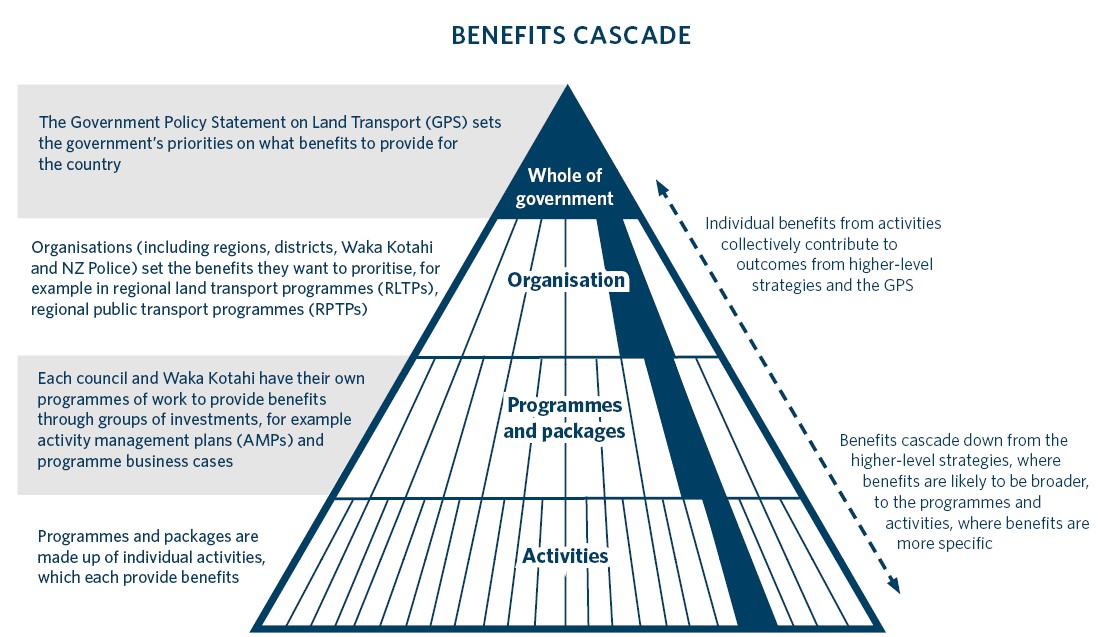This page provides principles to help users select the most appropriate benefits and measures in their planning and business case documents.
These principles are provided as guidelines only and are not requirements that need to be fulfilled when applying the benefits framework
Benefits are a thread that connects highest-level transport strategy to in-depth business cases. The benefits and measures from strategies (such as the regional land transport plan (RLTP) strategic context) will flow through and inform the benefits and measures in the lower levels – such as programme business cases and activities.

View larger image [JPG, 169 KB]
However, the best benefits for each document, process, or stage of the project need to be selected, rather than simply copied from the preceding document or process. This is because benefits at the more strategic end of the process are likely to be broader, while benefits for in-depth processes and business cases are likely to be more specifically associated with, and as a result of, an activity.
Benefits will need to be revisited and refined through the business case stages. It is expected that, as the business case is developed, there will be greater clarity about the impact of the investment and the associated benefits measures, resulting in a potentially larger set of more diverse benefits at the end.
The range of benefits means it is necessary to consider trade-offs across benefits when discussing and selecting them. If one benefit is sought as a positive outcome, consider if there are any unintended negative impacts on other benefits in the framework. For example, while the installation of new roading infrastructure might improve access, does it negatively impact on greenhouse gas emissions?
Selecting more benefits will not improve a proposal’s assessment prospects for National Land Transport Programme (NLTP) inclusion and/or funding approval. Decision-makers will be looking for evidence (through changes in the benefits measure or measures) of the impact of each selected benefit, rather than the number of benefits that can be associated with the investment. There will need to be a balance between reflecting an appropriate spread of benefits and measures without setting up an unnecessarily large set for ongoing monitoring.
The benefits framework lists measures that are numbered and associated with benefits. However, there are some overlaps between the benefits, and you can select measures from any area of the benefits framework, regardless of the benefit selected, if it provides appropriate evidence for the benefit.
Of the 25 benefits in the framework, 12 of them have approved monetisation methodologies. If you select a benefit that will be monetised, you are required to also select a quantitative or qualitative measure for the benefit, if available. For example, if you select 1.1 Impact on social cost of death and serious injuries as a benefit and you decide to monetise it, you will also be required to select an appropriate safety measure, such as 1.1.3 Deaths and serious injuries. This will allow for ongoing benefits management and benefits realisation monitoring and reporting against the benefit.
Monetisation is not the same as measurement for the purposes of the benefits management approach and, although related, they serve different purposes.
For more detail about monetised benefits, read the Monetised costs and benefits manual
For more about measurement, read Land Transport Benefits Framework measures manual